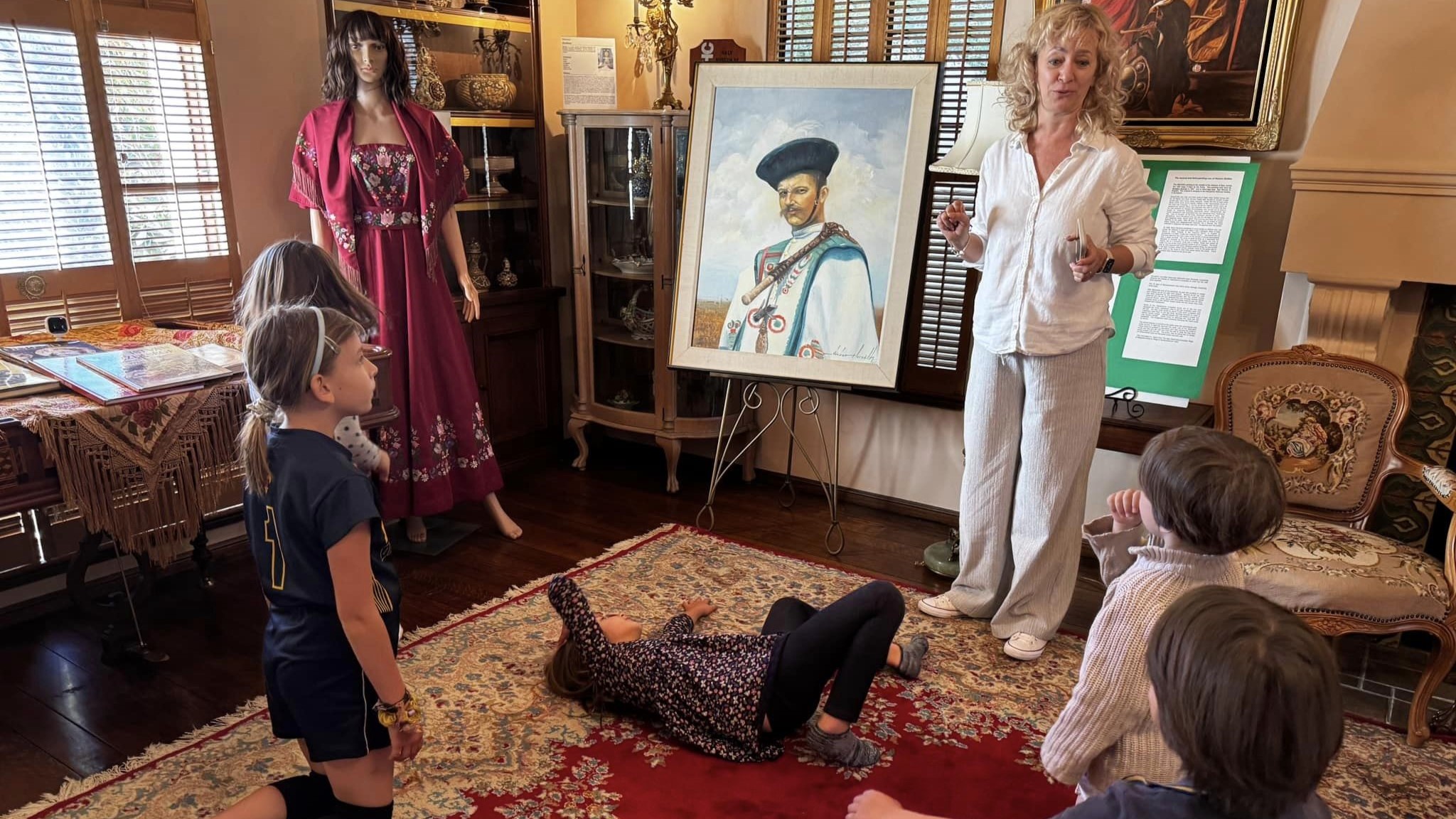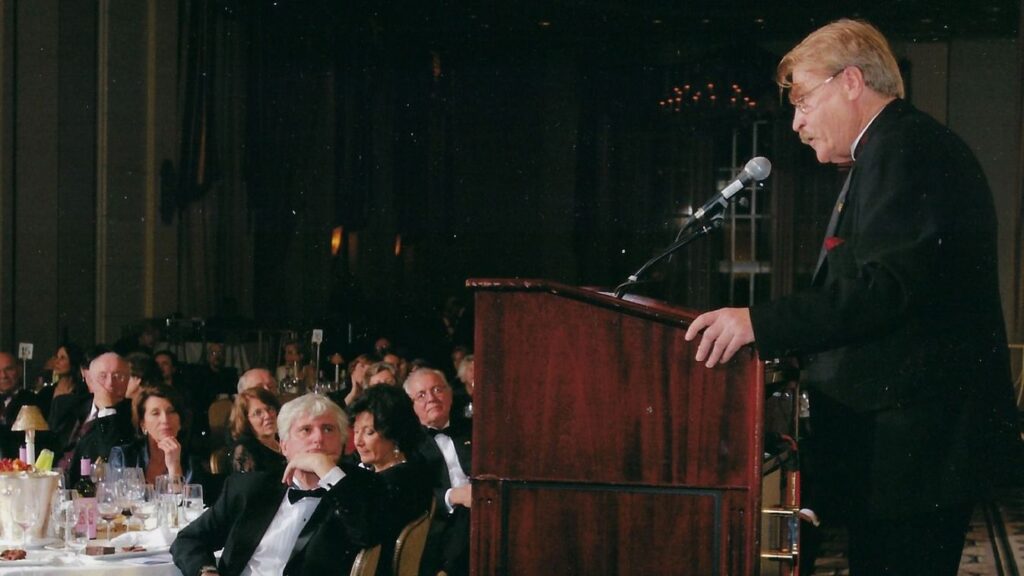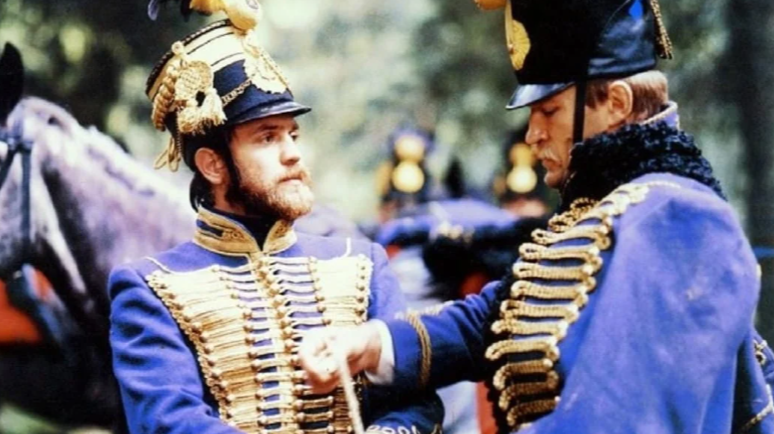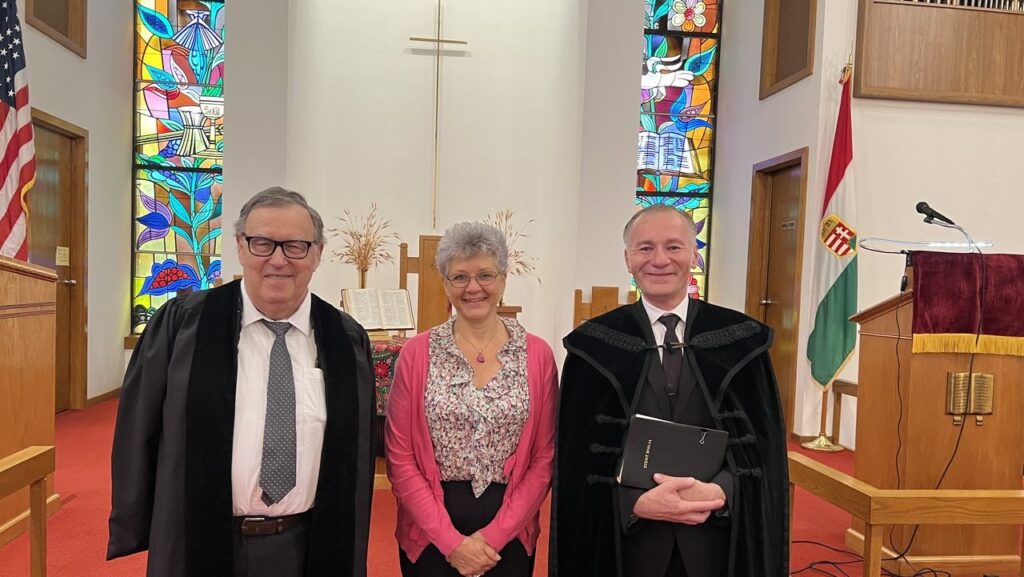On October 25, the latest edition of the online conference series organized jointly by the Diaspora Project Network of the University of Pécs (PTE) and Kerko Media Ltd. continued to feature Hungarian communities and their collaborations in the San Francisco area. (The first part was held on 27 September.) The moderators of the event were János Keresnyei, the director of Kerko Média Ltd. and PTE Deputy Rector Dr. Ákos Jarjabka. The impressive presentation of the diverse voluntary activities of Hungarian organizations in North California was followed online in several countries around the world.
Honorary Consul Éva Voisin presented statistics of various Hungarian organizations in North America: a couple of hundreds of organizations, 78 churches or mission facilities, over 30 Hungarian schools and kindergartens, 25 scout troops, more than 10 Hungarian houses, museums and libraries, and 13 separate 1956 memorials. Listing the names of famous people of Hungarian descent in California, she mentioned József Pulitzer, founder of the Pulitzer Prize and the Pulitzer School of Journalism; Károly (Charles) Simonyi, Microsoft developer and space tourist; Mihály Csíkszentmihályi, psychologist and the father of flow theory; Nobel Prize-winning economist Milton Friedman; tennis legend Mónika Szeles; Olympic champion gymnastics’ coach Béla Károlyi; football stars Joe Namath, Larry Csonka and Lou Groza; and from the world of movies, Vilmos Fuchs (William Fox); Tony Curtis and his daughter Jamie Lee Curtis.
In her remarks she also introduced the HuGo application, a collection of Hungarian American sites and events, and pointed out that in 2026, Hungarians in the U.S. will celebrate a double anniversary: the 70th anniversary of the ’56 revolution and freedom fight and the 250th anniversary of the founding of the United States. There are plans to recognize Hungarians across the U.S. who have contributed to the development of America since 1776, she concluded.
Ildikó Pataki, regional president of the Diaspora Council USA, said that the previous day in Bonyhád, Hungary she had attended the funeral of State Secretary for National Policy Árpád János Potápi, who passed away last week. She laid a wreath on the grave on behalf of the North American Hungarian diaspora. Afterwards, at the suggestion of Dr. Ákos Jarjabka, the participants observed a minute of silence in honour of the deceased official.
Commander of the Boy Scout Troop No. 77 Béri Balogh Ádám, Csaba Keszei, representing also his wife, Etelka Keszei, Commander of the Girl Scout Troop No. 43 Lósárdy Zsuzsanna, described the activities of the two local scout troops. More than 60 children meet every two weeks, but the number of participants at their larger events, when former or older scouts also join, goes well over 100. Scouting is supported by the Hungarian Catholic Mission and the Reformed Church of San Francisco and Vicinity, and the former also provides venues for their activities and events. They collaborate with the Kányádi Sándor Hungarian School and the Eszterlánc and Mazsola folk dance groups. He outlined the general aims of scouting: teaching independence and preserving Hungarian culture (language, literature, history and geography) through role-play, frame stories and real-life experiences in nature. Scouts take a vow to live by the Ten Scout Laws, learn the importance of discipline, the meaning of service and sacrifice, how to care for themselves and others, and make lifelong friendships.
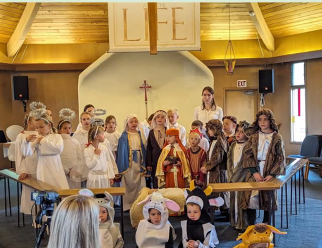
Kata Tóthné Kollár has been teaching since 2001 in the Kányádi Sándor Hungarian School, founded in 1966, and has been its principal since 2011. They currently have 75 students overall in the kindergarten and in seven classes, led by 10 volunteer teachers. They study for two hours every fortnight on Sundays, after mass/service, and before scouting. They closely cooperate with the scouts: all students are scouts, and all scouts are Hungarian students. Kata, who is in charge of the educational activities at the Association of Hungarian Scouts in Exteris (abbreviated in Hungarian as KMCSSZ) said that this complete overlap is a unique phenomenon within the North American Hungarian diaspora. Classes are structured according to age and Hungarian language skills, but since there are mainy newly immigrated families in the Bay Area in addition to the second or third-generation Hungarian children, differentiated teaching is necessary. Their curriculum ranges from storytelling and learning the alphabet and poetry to reading the novel The Boys of Paul Street, which is of special importance to them because of the scouting.
Their curriculum includes preparation for the Hungarian language and literature, history and geography exams of KMCSSZ, which their students pass with an 85 per cent success rate. Each year, 80–100 scouts in the Hungarian diaspora take the exam and on three occasions in the recent past their students have received the highest scores.
Besides being the USA regional president of the Diaspora Council, Ildikó Pataki has also been a teacher at the Kányádi Sándor Hungarian School for 19 years and has been its co-principal since 2023. She added that they were the first to take the famous Hungarian poet’s name and have a sibling school relationship with the school in Nagygalambfalva (Porumbeni Mari, Transylvania, Romania) where the poet was born and is buried. They take part in several poetry competitions, including the one organized by their above-mentioned sibling school. The students perform at all national and religious holiday celebrations, while the teachers take part in various professional training courses.
Éva Szabó, Deputy Director of the East Bay Hungarian Educational Group (Walnut Creek Hungarian School) founded by Mária Rachidi in 2016 informed us about their primary mission: cultural education and development of Hungarian language skills of children of Hungarian descent. Their classes are held on Saturdays, three times a month. Their activities include music, folk dance, folk songs, literature, history (most recently even clay craft) for children aged 3–12, but they also offer beginner and advanced Hungarian language classes for adults, both online and in person. They offer online classes in museum education, video editing, media literacy without age limitations as well as extra-curricular activities and community family programs.
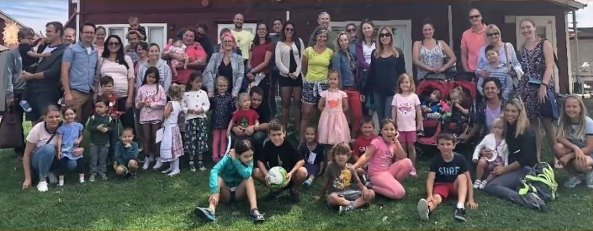
Dr. Zoltán Egyed presented the activities of the Hungarian Innovation and Science Society of Silicon Valley (Innovator Club), founded in 2018 and led by him and Dr. József Patvarczki. Its mission is to facilitate contacts between Hungarian scientists, engineers, doctors and innovation professionals; to facilitate the establishment of joint projects, to build organizational synergies and to assist young professionals. Their members are present in the most prestigious large companies and new startups in the area, at many levels and specialty areas. Their organization provides a base of expertise for Hungarian innovation and science professionals living in and visiting the San Francisco area. Their events (63 held to date), where world-class experts present, focus on innovation, strategy, startups, science and technology. Their latest project is mentoring, i.e. giving something back to the community through knowledge sharing, supporting the success of the next generation and nurturing Hungarian culture. In doing so, they support personalized professional development and provide assistance in relation to cultural integration.
Éva Voisin, on behalf of the Hungarian American Chamber of Commerce (HACC), founded by her in 1990, noted that they are partners of the Innovator Club (for example, by providing a venue for their meetings), and the EU Chamber. Their aim is to build and support economic relations between the two countries, as well as to connect and mentor Hungarian entrepreneurs in the U.S. and provide them with a platform to present themselves. The main topics of their recent programs are new tax obligations, digital laws, career advice, wine tasting, and informal discussions. This year, Zsófia Keszei, an engineer, was awarded their Balázs Bodai Prize for her work related to 3D printing.
Board member Judit Fischer informed us about the Kodály Foundation’s mission: to develop music education based on the world-famous Hungarian composer’s creed through supporting the Kodály Center, which offers a Kodály pedagogy master’s program, a summer diploma program and advanced Kodály seminars for teachers, conductors and children interested in musical development. We also learnt about the background of the Kodály Center, founded in 1969 at Holy Names University: in 1966 Gyula Szabó and his wife invited Zoltán Kodály and his wife Sarolta to their Oakland home, and a nun, who was also a professor at the Holy Names University listened to a lecture by the composer there. This lecture led to the establishment of the Center shortly afterwards. The Center was taken over by the University of Redlands in 2023, and the Kodály Foundation was established to ensure its survival, by providing funds for training, scholarships and for maintaining its staff (two full-time faculty members and one administrative position), promoting music programs and events, and providing financial support for publication of professional books and audiovisual materials.
János Horváth spoke about the Tokaj–Sonoma twin town relationship was established in 2012 in the Buena Vista Winery, founded by Ágoston Haraszthy. Its aim is to foster contacts between the Tokaj and Sonoma communities and promote Hungarian culture. This relationship has led to the creation of the Wine Apprentice Exchange Program, which currently brings two young Hungarian (and two French) winemakers to Sonoma every year. In addition, charity events are organised to showcase Hungarian cuisine, folk music and costumes.
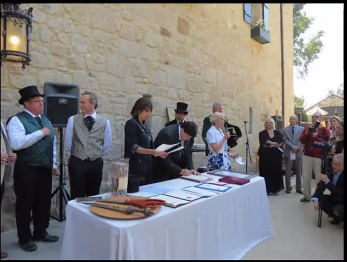
Colonel Ferenc Bakonyi introduced the First California Hussar Regiment, unique in America, founded in 2001, which is part of the Los Gatos Horsemen’s Association and a member of the Hungarian Heritage Association. Their activities are aimed at preserving and reviving Hungarian Hussar culture and promoting it among the Hungarian American community and the American public. At first the regiment (18 men) consisted mainly of Americans (having their own horses), but after the Covid pandemic only eight of them remained active. They have four Hungarian horses and 14 pieces of authentic 1848 uniforms. Their cultural performances (45-minute musical horse shows with colorful, entertaining equestrian challenges) highlight the cultural and historical common past shared by Hungary and America and are very popular among Americans. As a historical curiosity, he mentioned that Hungarian nobleman and Hussar Officer Mihály Kováts (Michael Kovats de Fabriczy) founded the U.S. Cavalry at George Washington’s request in 1776. Their community involvement includes regular participation at Hungarian national holiday celebrations and charity events as well as lectures in American high schools on the contributions of Hungarians to important historical turning points in America.
János Kelemen recalled that the San Francisco/San Jose Hungarian Soccer team was formed in 1990, thanks to József Veres from Bakonycsernye, Hungary. They have been operating continuously for 34 years as an independent organization, raising funds for their major events and organizing sports balls to cover their expenses. Their aim is to strengthen Hungarian identity and promote a healthy lifestyle through sport. The team also acts as a sports diplomacy mission. They are in contact with Hungarian soccer players and clubs and have visited Hungary three times as a team. They have 30 permanent players and hold three-hour training sessions every Saturday. They’ve won 13 of the 26 Árpád Cups so far, including the second in 1997 and the most recent one in 2024. The Árpád Cup was founded in 1996 by Las Vegas architect György Berényi and has been held in Las Vegas for 20 years. Since then, it has taken place in various locations, most recently in Detroit, Michigan, and next year in Tampa, Florida. Originally, the teams had to be named after Hungarian tribes and at least seven of the 11 players on each participating team had to be Hungarian. In 2006, Pál Dárdai Sr. was personally present at the Árpád Cup, and Hungarian football legend Jenő Buzánszky also visited them in the past.
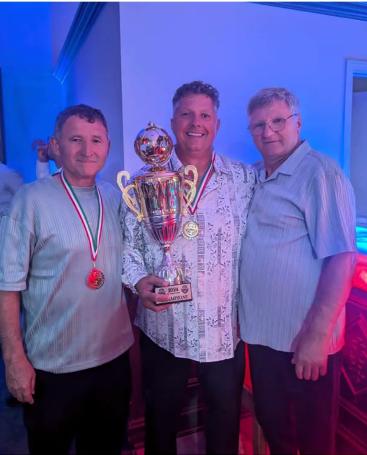
Éva Voisin gave a brief presentation on the diverse activities of the Honorary Consulate, which serves 6–10,000 Hungarians from Monterrey County in the south to the Oregon border in the north. Their services include providing community support on consular matters (about 300 inquiries a year); liaising with city, county, state and federal governments, the EU and other diplomatic missions; promoting economic, scientific, cultural and academic relations and cooperation; and promoting Hungarian culture and history through events and exchanges. She concluded the conference by stating that although this was the second event on the rich network of Hungarian organizations in the San Francisco area, three of them were still unable to attend: the Siófok–Walnut Creek Sister Cities, the Freedom Fighters Association and Hungaria Nostra.
Finally, the author of this article, a freelance journalist currently residing in New Jersey, introduced herself, highlighting that she has published 75 diaspora interviews, including the ones with conference attendees from the San Francisco area (out of the more than 200 pieces she wrote over the past two years about the Hungarian diaspora in North America). The interviews have been published in two volumes titled Magyarnak lenni Amerikában (To Be Hungarian in America) I-II with the support of the Bocskai Radio in Cleveland.

